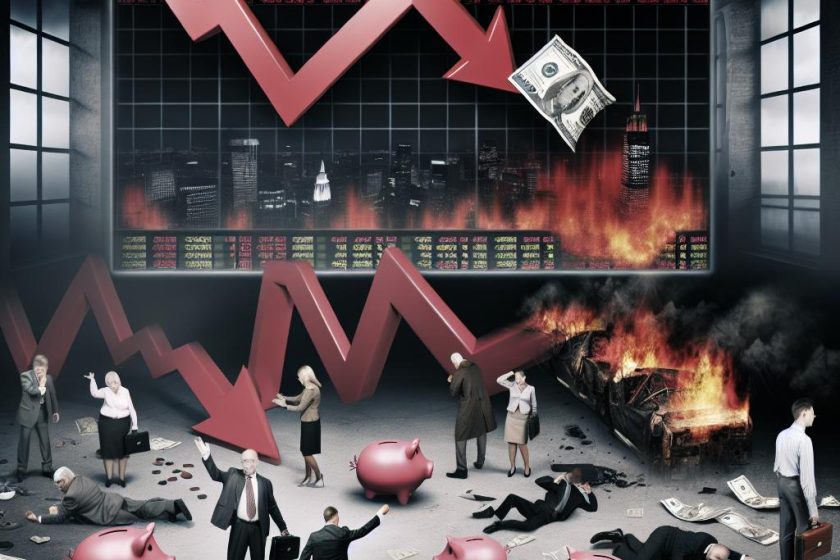Understanding the Causes of Stock Market Crashes
Stock market crashes are sudden and significant declines in stock prices across a significant part of the market. These events can have far-reaching impacts on the economy, investor confidence, and individual wealth. Understanding the causes behind these crashes can help investors and policymakers anticipate and mitigate potential risks.
Economic Factors
One of the primary drivers of stock market crashes is a drastic change in economic conditions. Such changes can include events like a recession or a sudden downturn in economic indicators, such as a rise in unemployment or a decrease in consumer spending. These changes can lead to a loss of investor confidence, prompting actions that may exacerbate market downturns. When the economy slows down, companies may report lower profits, leading investors to sell off stocks. This sell-off causes stock prices to fall further, contributing to the crash.
Interest Rate Fluctuations
Interest rates, determined and adjusted by central banks, are a crucial economic tool and can significantly influence market stability. When interest rates rise, borrowing costs for companies increase. This rise can reduce potential profits and, as a result, affect stock valuations negatively. Alternatively, when interest rates are unexpectedly lowered, it might signal underlying economic troubles, prompting investors to re-evaluate their holdings. The uncertainty surrounding interest rate changes can lead to increased volatility in stock markets, sometimes resulting in crashes.
Market Speculation and Bubbles
Another significant factor contributing to stock market crashes is market speculation, often leading to the formation of speculative bubbles. These bubbles occur when stock prices are driven to unsustainable levels, frequently due to investor exuberance or overconfidence. This artificial inflation in stock prices can occur in specific sectors or across the market as a whole. When the market eventually recognizes the unsustainable growth of stock prices, or if investors collectively decide to sell off their shares, a crash can swiftly follow.
The Role of Leverage
Leverage is a financial mechanism that allows investors to use borrowed funds to increase their potential returns. However, this means of amplifying gains also intensifies potential losses. During periods of speculation, many investors might increasingly use leverage to purchase stocks, believing in continual price increases. When market prices begin to fall, investors employing leverage are often forced to liquidate their shares to cover the borrowed funds, further intensifying the downward spiral.
Geopolitical Events
Geopolitical events play a crucial role in influencing stock markets. These events can encompass international tensions, wars, and political instability, all of which can significantly disrupt market stability and investor confidence. Such events create an environment filled with uncertainty, which investors typically view as a reason to retreat from riskier assets like stocks. For instance, any major conflict impacting oil-producing regions can lead to fluctuating oil prices, affecting industries and economies worldwide, sometimes resulting in stock market crashes.
Technological and Structural Factors
The inherent structure of the stock market and the evolving technological landscape can contribute to crashes. The rise of algorithmic trading and high-frequency trading exemplifies how technology can exacerbate market movements. These trading methods, driven by advanced computational techniques, can lead to rapid and massive sell-offs, contributing to market crashes. Additionally, technological failures or glitches can result in unintended market impacts, such as unexpected sell-offs that lead to a crash.
Market Liquidity
Market liquidity, defined as the ease with which assets can be bought or sold without significantly affecting their price, is critical in maintaining market stability. During times of crisis, liquidity often dries up, causing investors to panic. This panic selling can result in investors unloading assets at any available price, further aggravating the market crash scenario. A lack of liquidity adds a layer of complexity to stock market stability, especially during tumultuous economic periods.
Regulatory Actions and Policy Shifts
Another factor to consider when understanding stock market crashes is the effect of regulatory actions and shifts in government policy. Changes such as unexpected tax reforms, introduction of tariffs, or new regulations can unsettle markets considerably. Even the anticipation of such regulatory changes can induce volatility, as investors and corporations try to predict how these adjustments will impact corporate profits and stock valuations. The uncertainty and transition associated with policy shifts can sometimes act as a catalyst for market downturns or crashes.
Conclusion
In conclusion, stock market crashes often result from a complex interplay of various factors, ranging from economic and geopolitical influences to technological and structural components. While it is challenging to predict these events with exact precision, understanding the multifaceted causes behind them can aid investors in making informed decisions. It equips policymakers with the necessary insights to implement strategies designed to cushion the impact of such catastrophic market phenomena. By analyzing the underlying causes, stakeholders in the financial sector can work towards building a more robust and resilient market infrastructure. For further insights and detailed analyses, consider exploring financial news platforms like The Financial Times or economic research institutions such as The National Bureau of Economic Research.
This article was last updated on: May 12, 2025
